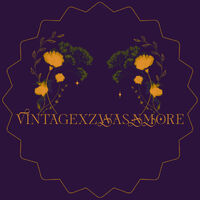Early 20th Century Litho
A lovely lithograph, from the years 1900-1920, which showcases a breathtaking idyllic scene. Nestled beside a tranquil river, a charming country cottage graces the scene, evoking a sense of serenity and rustic elegance. This remarkable piece of art, resplendent in its authenticity, is a perfect addition to any abode seeking a simple countryside aesthetic. The lithograph remains in impeccable condition, with only faint signs of wear adorning its edges, discreetly concealed by the accompanying frame. Although the reverse side bears some markings, it still retains a relatively good state. The frame itself bears a touch of wear, yet it imparts a delightful rustic cottage chic quality to this enchanting artwork.
A lithograph is a printmaking technique that was invented in the late 18th century. It is based on the principle that oil and water do not mix. The process involves creating an image on a flat surface, typically a stone or metal plate, using oil-based ink or crayons. The surface is then chemically treated to make the image receptive to the ink.
The word "lithograph" is derived from the Greek words "lithos" meaning stone and "grapho" meaning to write or draw. The initial lithographic process involved using a limestone slab as the printing surface. The artist would draw the image directly onto the stone using an oil-based medium. The stone was then treated with a mixture of acid and gum arabic, which would fix the image onto the stone while repelling water from the non-image areas.
To print a lithograph, the stone was dampened with water, which would be absorbed by the non-image areas. Ink, usually oil-based, was then applied to the stone, adhering only to the drawn image. A piece of paper was placed on top of the stone, and both were run through a press, transferring the inked image onto the paper.
The lithographic process revolutionized printmaking as it allowed for the mass production of high-quality prints. Prior to lithography, printmaking techniques such as woodcuts and engravings required painstaking and time-consuming carving or etching of the image onto a surface. Lithography, on the other hand, offered a more accessible and efficient method of reproducing artwork.
Lithographs gained popularity in the 19th century as a means of disseminating art to a wider audience. Artists could create multiple copies of their work, making it more affordable and accessible to a larger number of people. Lithographs were used to reproduce a range of subjects, including landscapes, portraits, and illustrations for books and newspapers.
The development of lithography also coincided with the rise of commercial advertising. The technique allowed for the production of vibrant and detailed posters, advertisements, and labels, which became popular forms of visual communication. The ability to print in color further enhanced the impact of lithographs in the advertising industry.
Over time, lithography evolved and incorporated new materials and techniques. Instead of limestone, metal plates, such as zinc or aluminum, began to be used as the printing surface. This allowed for finer details and a smoother printing process. Offset lithography, a variation of the technique, emerged in the early 20th century and became the dominant method.

